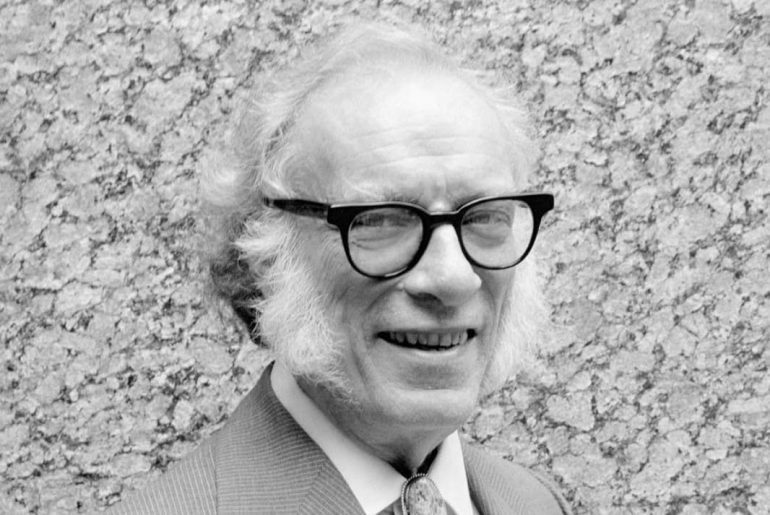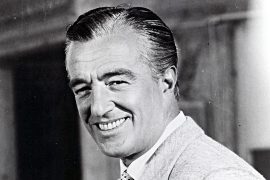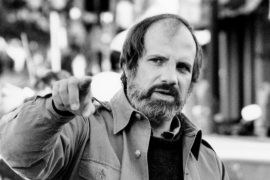(Petrovichi, Smoliensk, 1920 – New York, 1992) American writer of Russian origin who stood out especially in the genre of science fiction and popular science.
Born into a Jewish family, he was the firstborn of the marriage formed by Judah Asimov and Anna Rachel Berman. Some biographers erroneously set his birth on October 4, 1919, without noticing the fact that his mother modified this date so that little Isaac could enter public education a year before the one that corresponded to him for his age. .
In early 1923, the Asimov family left the newly created Soviet Union for the United States of America. Installed, initially, in the New York neighborhood of Brooklyn (inhabited mostly by Jewish citizens), the Asimovs got ahead in their new country thanks to the candy store run by the head of the family, a business that little by little was thriving and moving location.
In this establishment, a series of science fiction publications were put up for sale that the very young Isaac began to devour with true curiosity as soon as he had learned to read, without suspecting that, over the years, some of those magazines would take to the streets carrying their own name on their covers.
This intellectual precocity encouraged his parents to provide him with an early school education, so his mother falsified his date of birth to make it possible for him to enter a New York public school in 1925. He then attended his high school at East New York Junior High School, from which he graduated in 1930; He then went on to Boys High School, where he remained until 1935, the year in which, having brilliantly completed his high school studies, he was ready to undertake his higher education at just fifteen years of age.
Enrolled in Columbia University in New York in 1935, after four years Isaac Asimov had already obtained a Bachelor’s degree in Chemistry; Later, new higher studies allowed him to graduate in Sciences and Arts and get a doctorate in Philosophy. Against the wishes of his parents, who hoped that he would devote himself to the practice of medicine, Asimov decided that his professional future would necessarily pass through the cultivation of literature.
During World War II he worked for the US Navy in a Philadelphia laboratory. In 1942 he married Gertrudis Blugerman, with whom he would have two children. After the war, Asimov left his post in the Navy and continued studying Biochemistry at Columbia University, for which he received his doctorate in 1948. The following year he joined the faculty of the Boston University Medical School, to practice teaching as an assistant professor of Biochemistry, a subject that he continued to explain in these classrooms for almost a decade (1949-1958).
In 1970, Isaac Asimov separated from his wife, Gertrude, to marry, three years later, Janet Opal Jeppson, with whom he had no children. At the beginning of the 1990s, as a result of a surgical intervention motivated by a serious prostate condition, Isaac Asimov was forced to reduce his intense creative and research activity. His death occurred in New York City in the early spring of 1992, as a result of heart failure and kidney failure; Ten years later, his second wife revealed that the writer had contracted AIDS in 1983, receiving a transfusion of infected blood during an operation.
Isaac Asimov’s work
A prolific writer (more than five hundred published titles) and a great popularizer, Asimov’s futuristic work has enjoyed great popularity due to the wise balance he achieves between style, literary imagination and the technological and scientific world. Continuation in an updated and perhaps more rigorous line of the classics of the genre (Jules Verne, H. G. Wells) and sometimes oriented towards the most characteristic dystopian visions of the 20th century (Aldous Huxley, George Orwell, Ray Bradbury), in 1939 he began to publish science fiction stories in specialized magazines, imposing itself in a few years as the main representative of the “technological” branch of this genre, in which the vision of the future world and of new forms of social organization is always based on premises of a scientific nature (although more or less futuristic) and the corresponding technological advances.
In his robot stories, collected in I, Robot (1950) and The Second Book of Robots (1964), Asimov established the three laws of robotics, which put the robot at the total service of man and, although they sometimes seem to violate them, it ends up being discovered that this happens in the best interest of Humanity. But while the robots evolve towards an android model of intelligence and moral clarity superior to those of men, these, moved by their selfish impulses, incubate a deep hostility towards them.
Between 1942 and 1949 Asimov published in Astounding Science Fiction the stories that would later constitute his Foundations Trilogy, composed of Foundation (1951), Foundation and Empire (1952) and The Second Foundation (1953). This uneven but powerful corpus of stories focuses on the decline of a huge galactic Empire of terrestrial origin and on psychologist Hari Seldon’s attempt to limit the period of barbarism that has already begun to just a thousand years, a goal that is proposed thanks to the two foundations of scientists and psychologists that he has created for this purpose and “psychohistory”, a new science to predict the future behavior of the masses.
In 1983 he published a continuation of the Trilogy, The Limits of the Foundation, a fairly long novel, full of intrigues for power and questions to be resolved. Among his various novels of the 1950s, often only partially successful, are Abysses of Steel (1953) and The Naked Sun (1957), in which Asimov successfully associates science fiction with police investigation, creating the character of detective Elijah Baley, aided in his work by a robot.
In this last novel, the description of the terrestrial society that lives under subterranean steel vaults and in practically miserable conditions, compared to the supercivilized planets on which it depends, is especially fortunate. From 1972 is The Gods Own, with its memorable inhabitants of a “parallel universe”, of fluid consistency and who coexist forming triads.
Asimov’s novels, generally more satisfying than his scores of short stories, have an often bland style, based almost exclusively on dialogue, and devoted to little more than serving as a vehicle for the author’s theses. But his strength is also in this web of ideas, and the good rhythm of his writing almost always manages to involve the reader in an exciting crescendo, proposing, with tireless argumentation, infinite questions about man and about the intricate path with which he tries to plan your own future.
With dozens of his popular science books, Asimov always affirmed his optimistic faith in progress based on the rational use of science and technology. In the field of dissemination, he also addressed other fields of knowledge, such as history, mathematics, psychology and sociology, and even spoke of a new humanistic discipline, psychohistory, which, according to his proposal, would be a sum of the contributions of the four branches of human knowledge just mentioned. Driven by his didactic eagerness, he also wrote some works aimed at children and young people, in which he combined fiction with a series of scientific and historical rudiments.
Who is Isaac Asimov What is the most known for?
Isaac Asimov is best known for the Foundation series and robot stories. The Foundation stories were written between 1942 and 1949 and were collected as the Foundation trilogy: Foundation (1951), Foundation and Empire (1952), and Second Foundation (1953).
What was Isaac Asimov’s contribution to science?
In Asimov’s science fiction writing, he is perhaps most well-known for his Three Laws of Robotics: “1) A robot may not injure a human being or, through inaction, allow a human being to come to harm. 2) A robot must obey the orders given it by human beings except where such orders would conflict with the First Law.
What was Isaac Asimov’s cause of death?
Isaac Asimov, the pre-eminent popular-science writer of the day and for more than 40 years one of the best and best-known writers of science fiction, died yesterday at New York University Hospital. He was 72 years old and lived in Manhattan. He died of heart and kidney failure, said his brother, Stanley.
What inspired Isaac Asimov to write?
Isaac Asimov was inspired to write science fiction by reading a magazine called Science Wonder Stories.
What was Isaac Asimov’s IQ?
Asimov had to take an IQ test during his days in the army. He scored a 160 where everyone else didn’t score over a 100. Asimov didn’t get any promotion or anything because the IQ tested how book smart he was and those skills aren’t needed as much for the army.
Where should I start reading Asimov?
I, Robot.
The Caves of Steel.
The Naked Sun.
The Robots of Dawn.
Robots and Empire.
The Stars, Like Dust.
The Currents of Space.
Pebble in the Sky.
Is Asimov easy to read?
His prose was always straight-forward, simple, and readable. It was absolutely bare-bones, something he was unapologetic for, and that seems easy enough. It just gets intimidating when you zoom out a little and realize that he wrote over 400 books.





